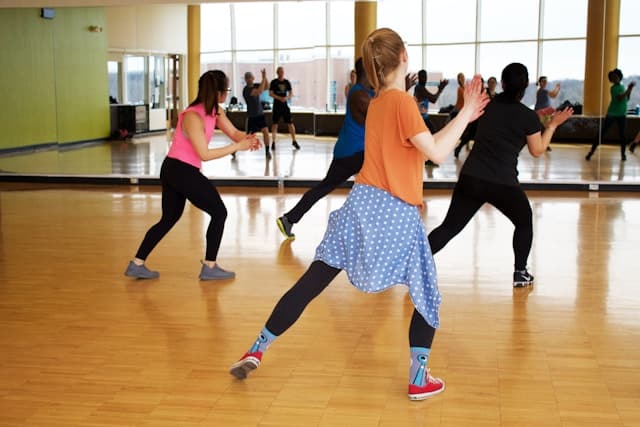As we delve into the world of health and wellness, we often come across the term osteoarthritis. This condition, commonly affecting the knees, is a type of joint disease that results from the breakdown and eventual loss of cartilage within the joints. It can cause severe pain and discomfort, and in many cases, impedes daily activities. However, research has found that incorporating aerobic exercises into the daily routines of patients with osteoarthritis can lead to significant health improvements. This article will explore this topic in-depth, focusing on how low impact aerobic exercises can benefit individuals with osteoarthritis.
The Impact of Aerobic Exercise on Osteoarthritis
Before delving into the benefits of aerobic exercise on osteoarthritis, it’s crucial to understand what osteoarthritis is and how it affects one’s health. According to both Google Scholar and PubMed, two reliable sources for academic research, osteoarthritis is a degenerative joint disease characterised by the breakdown of cartilage within the joints. This breakdown can lead to severe pain and disability, especially when it affects weight-bearing joints like the knee.
In the same genre : Does the Inclusion of Yoga in School Curricula Enhance Academic Performance and Stress Management?
In this context, aerobic exercise plays a crucial role. For individuals with knee osteoarthritis, incorporating a routine of regular, low-impact aerobic exercise can significantly ease pain and improve overall joint health. Aerobic exercises, such as walking, cycling, and swimming, focus on increasing heart rate, enhancing cardiovascular health, and promoting overall physical well-being.
The Connection Between Aerobic Exercise and Pain Reduction
One of the most significant benefits of aerobic exercise for individuals with osteoarthritis is its ability to reduce pain. Pain is a predominant symptom of osteoarthritis, and it can impact daily activities, from walking to climbing stairs. However, several studies have shown that aerobic exercise can help alleviate this pain.
Also read : What Are the Most Effective Approaches to Smoking Cessation Among Teenagers?
Engaging in regular, low-impact aerobic exercise, such as swimming or biking, can decrease inflammation within the joint, thus reducing pain. Moreover, aerobic exercise has been found to improve pain tolerance, making it easier for individuals with osteoarthritis to manage their discomfort.
The Role of Aerobic Exercise in Improving Joint Health
Aside from pain reduction, another important benefit of aerobic exercise for individuals with osteoarthritis is improved joint health. Regular physical activity can help strengthen the muscles around the joints, providing better support and reducing the strain on the joints.
Furthermore, aerobic exercise can also improve joint flexibility and mobility. When individuals engage in regular aerobic activity, their joints go through a range of motion, which helps maintain joint flexibility. This is particularly beneficial for individuals with osteoarthritis, as it can prevent joint stiffness and enhance overall joint function.
Strength Training as a Complement to Aerobic Exercise
In the context of osteoarthritis, it’s important to also acknowledge the role of strength training. While aerobic exercise works on improving cardiovascular health and reducing inflammation, strength training focuses on building muscle mass and strength.
Strength training exercises such as weight lifting or resistance training can be particularly beneficial for individuals with osteoarthritis. They help strengthen the muscles surrounding the affected joints, providing better support and stability. It’s essential for individuals with osteoarthritis to incorporate both aerobic exercises and strength training into their routine for comprehensive management of their condition.
How to Begin an Aerobic Exercise Routine with Osteoarthritis
Starting an exercise routine when living with osteoarthritis can seem daunting. However, remember that you should always start slow and gradually increase the intensity and duration of your workouts. Low-impact activities like swimming, cycling, or even brisk walking are great options to start with.
Before beginning any new exercise regimen, individuals with osteoarthritis should consult with a healthcare provider or physical therapist. These professionals can provide guidance on the types of exercises that are safe and beneficial for your specific condition, and can also help monitor your progress throughout your fitness journey.
Embracing Tai Chi as a Low Impact Exercise
Tai Chi is a centuries-old Chinese martial art that involves a series of slow, deliberate movements, meditation, and deep breathing. For individuals with osteoarthritis, Tai Chi provides an excellent low-impact, aerobic exercise option that can be easily incorporated into a regular fitness routine.
Scientific evidence, published on platforms like Google Scholar and PubMed, has shown that Tai Chi can effectively improve physical function and reduce pain in people with arthritis, including knee osteoarthritis. The gentle, non-competitive, and self-paced nature of Tai Chi makes it an ideal exercise for patients with osteoarthritis.
Tai Chi focuses on controlled movements and postures, which can help strengthen the muscles supporting the joints, thereby improving joint health. This form of exercise also promotes balance and flexibility, which can be particularly beneficial for individuals with joint stiffness associated with arthritis. Moreover, the meditative aspect of Tai Chi can help manage the mental stress often associated with chronic pain conditions like osteoarthritis.
One key advantage of Tai Chi is its adaptability for all fitness levels. It can be modified to suit the individual’s physical abilities and limitations, making it a suitable choice for those new to exercise or those with mobility issues. However, just like any other form of exercise, individuals should consult with their healthcare provider before starting Tai Chi. This ensures that the exercise routine is tailored to their specific condition and level of physical activity.
The Power of Low Impact Aerobic Exercise: A Conclusion
Osteoarthritis, a degenerative joint disease that primarily affects the knee joint, can cause significant discomfort and limit daily activities. However, the inclusion of low-impact aerobic exercise in one’s lifestyle has been shown to carry immense benefits for individuals with this condition.
From walking and cycling to swimming and Tai Chi, these exercises can improve heart health, alleviate pain, and enhance overall physical well-being. The power of aerobic exercise lies in its ability to decrease inflammation, improve pain tolerance, and enhance joint flexibility. The inclusion of strength training further complements the benefits by building muscle strength around the joints, providing better support and stability.
Evidently, physical activity plays an essential role in managing osteoarthritis. However, beginning a new exercise routine should be a gradual process, administered under the guidance of a healthcare provider or physical therapist. These professionals can provide tailored advice based on the patient’s condition, ensuring that the fitness journey is both safe and effective.
In conclusion, while osteoarthritis is a challenging condition to live with, it’s manageable through a combination of medical treatments and lifestyle modifications. As this article has shown, low-impact aerobic exercises, complemented by strength training, are powerful tools in managing osteoarthritis, reducing pain, improving joint health, and enhancing the overall quality of life.






